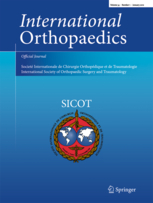
Arthroplasty
CT-based Patient Specific Instrumentation offers no additional benefit to conventional TKA
Int Orthop. 2014 Oct;38(10):2099-107112 adults with advanced osteoarthritis who were scheduled to undergo primary uncemented total knee arthroplasty (TKA) were randomly allocated to computed tomography (CT)-based patient-specific instrumentation (PSI) or conventional instrumentation. Radiographic evaluation was performed 12 months postoperatively, and findings revealed no statistically significant differences in coronal or sagittal implant positioning between techniques, except in the frontal tibial component angle (FTC). Patients in the conventional group experienced better FTC than patients in the PSI group.
Unlock the full article
Get unlimited access to OrthoEvidence with a free trial
Start TrialCritical appraisals of the latest, high-impact randomized controlled trials and systematic reviews in orthopaedics
Access to OrthoEvidence podcast content, including collaborations with the Journal of Bone and Joint Surgery, interviews with internationally recognized surgeons, and roundtable discussions on orthopaedic news and topics
Subscription to The Pulse, a twice-weekly evidence-based newsletter designed to help you make better clinical decisions
Exclusive access to original content articles, including in-house systematic reviews, and articles on health research methods and hot orthopaedic topics
Or continue reading this full article
Register Now

Subscribe to "The Pulse"
Evidence-Based Orthopaedics direct to your inbox.




































